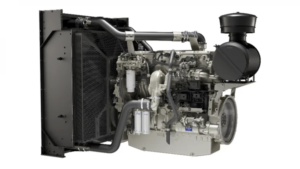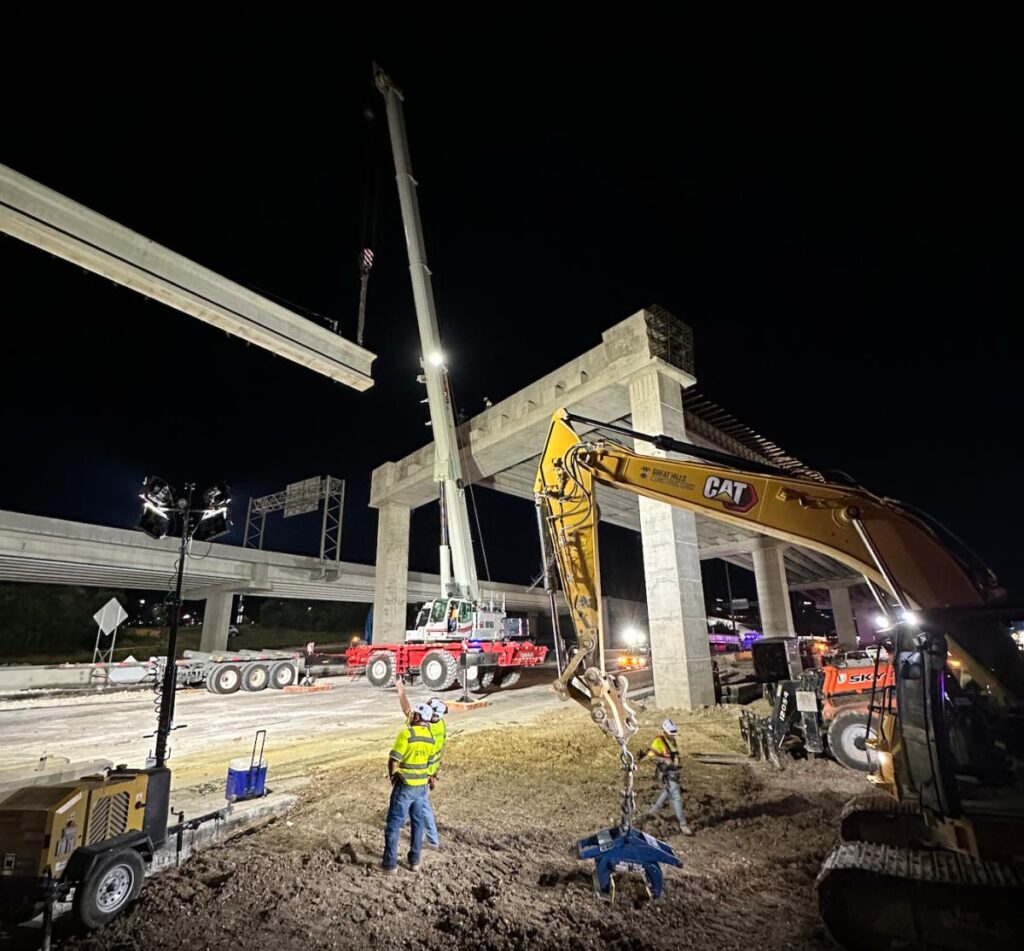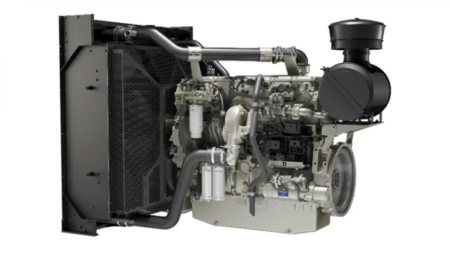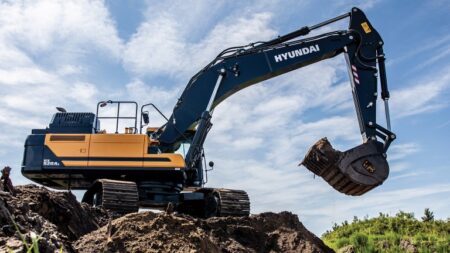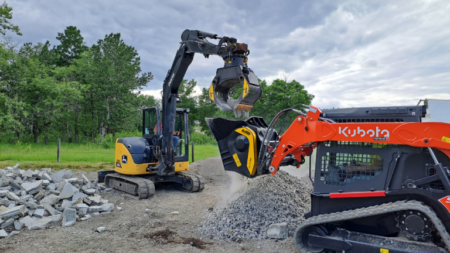Photo courtesy of the Central Texas Regional Mobility Authority
Nighttime work is a staple of the 183 North Mobility Project.
Construction crews in Texas continue their work on the $612 million 183 North Mobility Project, a corridor encompassing U.S. 183 between S.H. 45 and MoPac, one of the most congested roadways in Texas.
“Our goal is to manage that congestion and provide a reliable route for transit and emergency response,” said Mike Sexton, the Central Texas Regional Mobility Authority director of engineering. “Transit vehicles and emergency response vehicles will be able to use our tolled express lanes at no charge and provide more reliability when needed the most.
“Congestion has negative impacts on the economy, the environment and people’s quality of life, as well as safety, and this project has a goal of addressing that problem for this heavily trafficked area of Austin.”
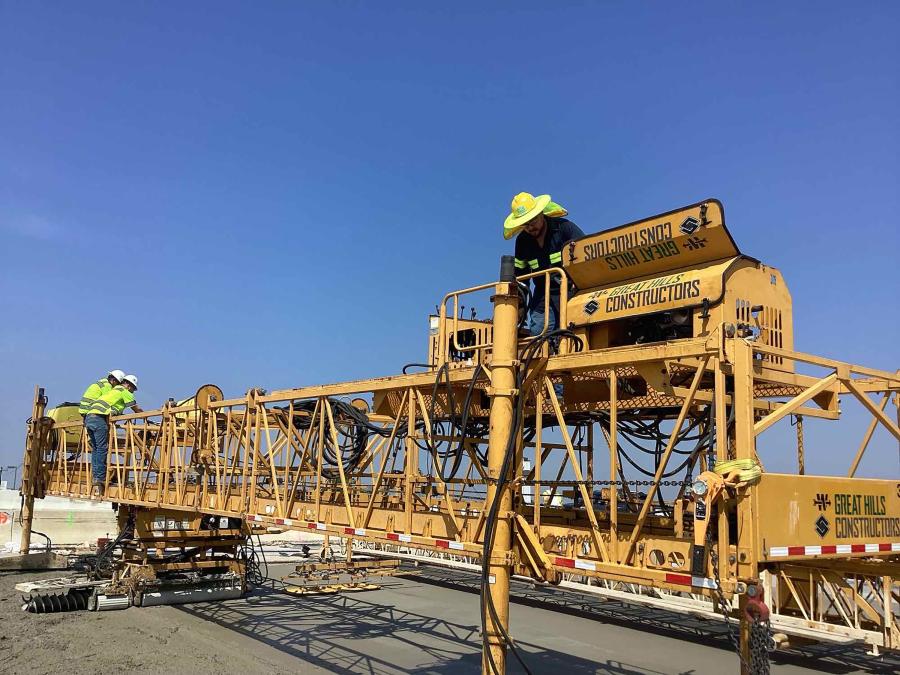
Photo courtesy of the Central Texas Regional Mobility Authority
Great Hills Constructors (GHC) serves as the project contractor.
This section of U.S. 183 was constructed in 1996 as a four- to six-lane divided highway. The corridor provides access to downtown Austin, as well as being populated with businesses, major employment centers, religious institutions, schools, parks and trails. As residential, retail and commercial growth continues in nearby communities, traffic backups are expected to worsen, with mobility further reduced.
This summer, a gradual traffic shift took place along the southbound and northbound U.S. 183 main lanes.
“It went very smoothly as we worked to open the fourth non-tolled travel lane early in the project,” Sexton said. “Crews opened sections of the fourth lane over time. Each night of the operation, an additional 3,000-4,000 ft. of roadway shifted traffic to the inside and opened the fourth lane to motorists. The project team worked in segments beginning in early June and concluded in August.
“A plan was in place to make sure the shifting of traffic and opening the additional lane positively impacted the flow in a safe and organized way. During the shift, drivers gained a lane in the direction of travel over time. There was on-road signage present to help guide drivers, as well as an extensive outreach campaign. Feedback from the public was overwhelmingly positive about the addition of the fourth lane.”
Sexton noted the early opening of an additional non-tolled travel lane in both directions between State Highway 45 North and MoPac was a significant step for crews.
“Opening the fourth non-tolled travel lane northbound and southbound U.S. 183 has always been a goal of final project completion; however, our agency and contractor prioritized the completion of this incredible milestone early in the project, in order to help the flow of traffic as construction continues,” he said.
“This accomplishment is very rewarding and is tangible evidence of our overall commitment to improve mobility, while lessening, where possible, any potential negative impacts of construction. The Mobility Authority’s aim is to keep Central Texans moving, and we’ve made great strides in that effort with this completion.”
Preparation work on the project got under way in late 2021; however, construction began in earnest in early spring 2022. Construction is taking place 24 hours a day, seven days a week to minimize impacts to the traveling public, with most of the work occurring at night and over the weekend.
Sexton said GHC and the Mobility Authority work well together.
“GHC has been a great partner for us because their team not only brings the high-quality craftsmanship and advanced skill necessary to construct a design-build project of this magnitude, they also share the Mobility Authority’s commitment to being a good partner in the community,” Sexton said.
“Their ability to rapidly adjust resources has been crucial to the project’s continued progress. GHC has demonstrated a remarkable capacity to add staff and bring in additional crews and subcontractors as needed, to work towards meeting interim and project milestones. This flexibility has allowed them to efficiently handle any changes or unforeseen challenges that arise, maintaining momentum and quality throughout the project.”
In addition to unprecedented inflation affecting the raw supply and materials, a large boom of infrastructure construction in the Austin area brought a huge demand on the labor force, requiring creativity in recruiting workers and retaining them.
“The project also calls for retaining walls exceeding 20 feet or higher. Some areas that require this work are tight and have made for inventive design solutions,” Seston said.
In addition to constructing as many as 35 retaining walls to facilitate outside widening of U.S. 183 and MoPac general-purpose lanes, crews are performing exterior widening of bridge decks that will be used as general-purpose lanes at the end of construction.
Workers also are making various drainage improvements to the frontage roads between RM-620 and Loop 360 to allow for construction of the outside widening along U.S. 183. Project milestones include completed interior widening from Lakeline Mall to MoPac, outside widening caps and columns that are finished along both U.S. 183 northbound and southbound frontage roads and extensive progress made on sidewalk/driveway construction along U.S. 183.
The project requires a temporary concrete batch plant located near the project corridor. The plant runs primarily at night, as long as road paving is in progress. The outreach team has met with area businesses, making them aware of potential sound, dust and light issues at night and how the construction team is mitigating those impacts.
Ongoing construction takes place rain or shine, although inclement weather does have an impact on what work can be accomplished, based on safety concerns for crews and the traveling public.
“This year, our summer has been more mild in temperature and rainier than the past couple of years,” Sexton said. “That said, it’s still hot and dry. Hot summers require us to ramp up dust mitigation activities and work hard to ensure our crews are staying hydrated and practicing heat safety. Freezing temperatures can also complicate our work. During the life of this project, we’ve had a couple of freezing ice and snowstorms.”
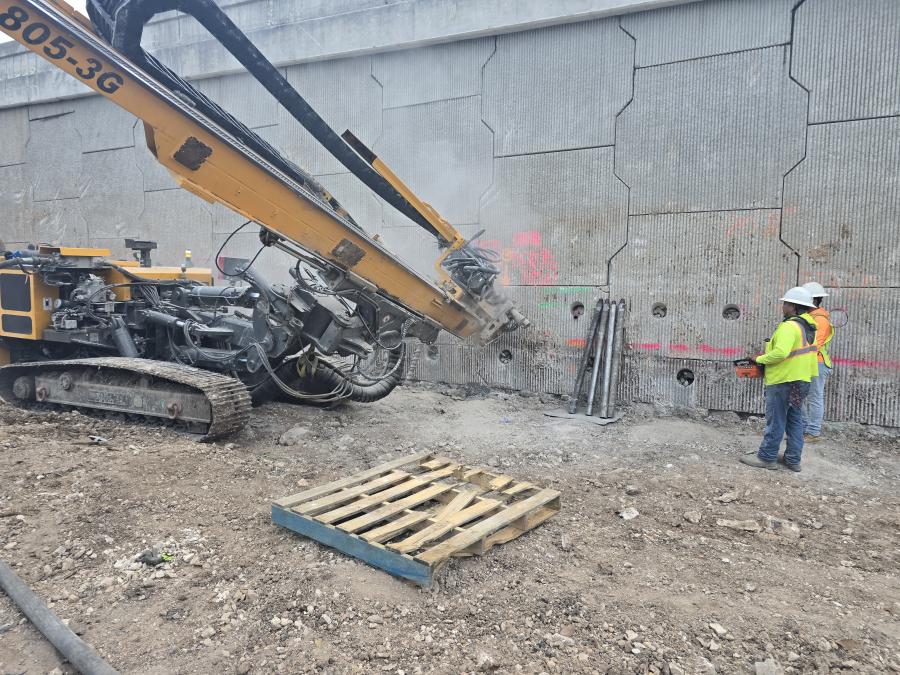
Photo courtesy of the Central Texas Regional Mobility Authority
Excavators, dozers, compactors, RT cranes, loaders and 2800 pavers are among the heavy machinery being used on the project. Mostly Cat equipment is used for earthwork operations. That includes CP44 and CP 56 compactors; D1, D3 and D5 dozers; 420 and 430 backhoes; 308, 325 and 336 excavators; 938 and 972 loaders; and 150 graders.
The cranes include a Grove 65t RT and a Link-Belt 160t (RTC80160). For concrete paving, crews will use a GOMACO 2800 paver, a GOMACO Commander III paver, a Gomaco 2600 placer, a GOMACO RTP 500 placer and an E2 Systems Loader attached material placer.
Chief materials include approximately 250,000 tons of retaining wall backfill, Type C1 embankment and base material, roughly 360,000 tons of asphalt and nearly 24 million pounds of reinforcing steel.
The project is scheduled to open to traffic in 2026. Sexton said the completed work will mean a smoother, safer and more reliable commute.
“It’s incredibly gratifying to work on such a meaningful project, and I know that sentiment is shared by so many on the team. Improving mobility has far-reaching positive effects, like the environmental benefits of keeping traffic flowing, the economic benefits of reliable travel, the quality of life benefits from the time saved, or perhaps most importantly, the benefit of providing a more reliable route for transit and emergency response vehicles.” CEG
Read the full article here


